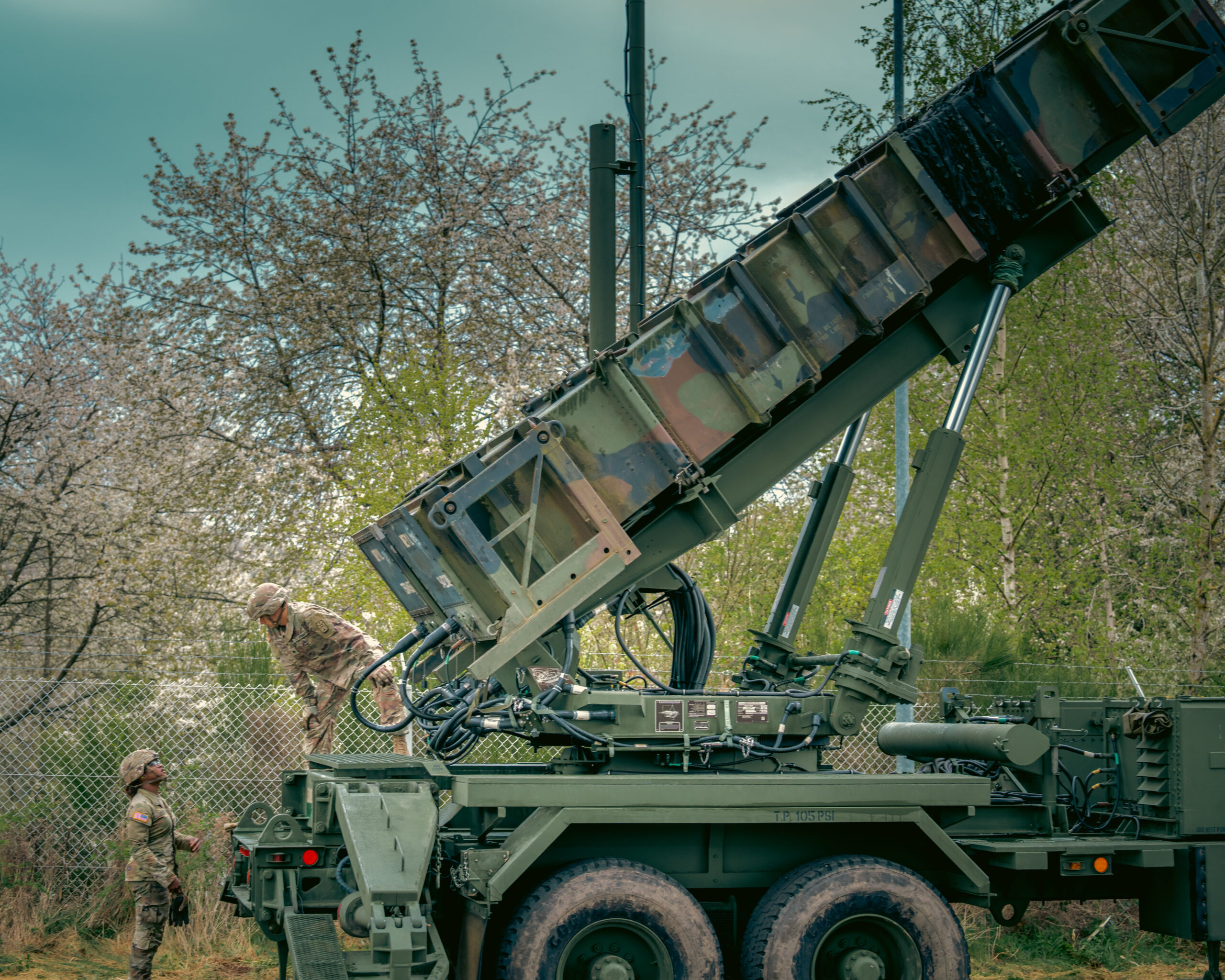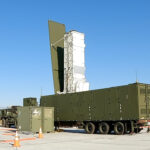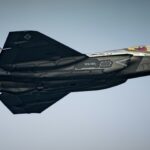NATO’s supreme allied commander, U.S. Air Force Gen. Alexus Grynkewich, has orders to push Patriot air- and missile-defense batteries to Ukraine at a pace faster than any previous transfer in the two-year campaign to reinforce Kyiv’s skies. He told Army officers and industry executives gathered here that planners are already matching available launchers with transport assets so hardware can leave European depots “as soon as coordination ends.”
The speed mandate arrives just days after President Donald Trump announced a new tranche of Patriots for Ukraine and urged European partners to foot most of the bill. His Oval Office remarks set off a scramble inside NATO to identify donor nations and back-fill promises with production contracts.
Germany answered first. Defense Minister Boris Pistorius offered to buy two new Patriot batteries from the United States, then pass them straight to Kyiv once crews complete verification tests. He put the price tag near $1 billion per battery, an estimate that largely reflects missile reload packs rather than the radars or launchers themselves.
Washington also alerted Switzerland that several Patriots it ordered in 2022 will instead head east. Bern acknowledged the diversion on July 17, noting that planned deliveries scheduled for 2026-28 will slip while Ukraine receives earlier production lots. Officials in both capitals framed the move as a temporary shift, not a cancellation, yet Swiss lawmakers voiced concern about gaps in national air defense.
Grynkewich, speaking from the Association of the U.S. Army’s first LandEuro conference, said he will convene all Patriot-owner states next week under NATO’s Security Assistance and Training for Ukraine mission in Wiesbaden. The goal: carve up tasks for shipping, crew certification and missile resupply. A senior alliance source indicated the meeting will seek at least three full batteries for immediate transfer and map a schedule for another nine to follow within a year.
Ukraine’s Patriot inventory started with a U.S. donation in April 2023. Since then the system has knocked down hypersonic glide vehicles, Iskander ballistic missiles and Shahed-series drones in what Kyiv’s air-force commander calls a “strategic firewall.” Raytheon has built more than 250 fire units for 19 customers worldwide; the United States owns roughly one-third of that fleet.
Patriot operators value the system so highly that few welcome the idea of giving one up. Greece and Spain resisted earlier pleas, citing commitments to NATO’s southern flank, while the Netherlands said it could spare only launchers, not the radar or control station. Diplomats involved in last-week’s round of calls described an awkward balance: protect home skies yet show solidarity while Ukraine’s power grid endures nightly strikes.
Planners now study which batteries can move without eroding regional deterrence. They weigh threat profiles, interceptor stocks and crew rotation cycles. One defense official said a battery stationed in Poland may redeploy to Ukraine because another U.S. system can replace it within weeks.
A possible near-term donors, according to alliance briefings viewed by Defense-Aerospace:
- Germany – two brand-new systems paid for under a bilateral deal.
- United States – up to three batteries already forward-based in Europe.
- The Netherlands – launchers and a spare radar pallet from its fourth battery.
- Sweden – a partial package tied to Stockholm’s F-35 offset program.
- That mix could send Ukraine at least 160 PAC-3 interceptors before autumn.
The rush to supply frontline hardware highlights a second dilemma: missiles run out faster than launchers wear out. Raytheon can assemble a dozen fire units a year, enough to cover current orders but not enough to replenish donations and meet fresh demand. Lockheed Martin, which produces the PAC-3 Missile Segment Enhancement interceptor, builds about 550 missiles yearly and has a government mandate to reach 650 in 2027. Company vice president Jason Reynolds said management now studies a surge plan to 750 with help from European subcontractors.
Missile-production milestones executives outlined this week:
- 2025: 600 PAC-3 MSE rounds, plant expansion in Camden, Arkansas, completed.
- 2026: 700 rounds, new motor line online in Huntsville, Alabama.
- 2027: 750 rounds, integration of European composite-case suppliers.
Back-fill contracts form a second industrial pillar. The United States plans one new Patriot battalion to replace its first Ukraine transfer and may add another if European partners release older batteries. Germany has already signed options for extra launchers once domestic lines free space, while Romania, Poland and Saudi Arabia negotiate schedule swaps to slide their orders a few months rightward.
Tom Laliberty, Raytheon’s land-and-air defense chief, told reporters here that the company’s backlog stretches into 2030. He expects an increase in co-production deals so governments can justify donations from active fleets and reclaim capability without waiting five years.
Interceptor flow matters as much as launchers. Ukraine fires an average of five PAC-3 missiles nightly, according to two officers in Kyiv’s Integrated Air Command. At that rate, even 12 new batteries could stall if missile deliveries lag. Our analysis shows Ukraine must secure at least 8,000 interceptors through 2028 to sustain current tempos and hedge against surges during major offensives.
Training remains the third leg of the effort. A multinational Patriot school in Germany already cycles Ukrainian crews through eight-week qualification courses. Staff there estimate they can handle four crews simultaneously by November, matching the expected pace of new battery arrivals. Planners explore mobile simulators so refresher drills can continue once systems sit on Ukrainian soil.
Kurt Volker, a former U.S. ambassador to NATO who still consults defense ministries, predicted Ukraine may field 12-13 batteries within a year if pledges translate into hardware and if production back-fills stick to schedule. He warned, however, that political churn – budget fights in Washington, coalition talks in Berlin, election cycles elsewhere – could slow deals.
Inside NATO headquarters, logisticians revise movement tables almost daily. They track rail load plans, flat-rack availability, convoy security and customs waivers. One official joked that “moving the missiles is easier than moving the paperwork,” yet each waiver saved shaves hours off transit. Spare-part kits pose their own puzzle because donor nations pack different electronics blocks and cable looms depending on upgrade status.
Throughout these negotiations Grynkewich sticks to one red line: no public disclosure of exact quantities or routes. He argues that silence complicates Russian targeting and lets Ukraine surprise adversaries with flexible deployment patterns. Analysts familiar with Patriot operations note that radars can reposition within minutes, but the knowledge that extra batteries exist may already force Moscow to disperse missile salvos.
European legislators still ask why Patriots, rather than other systems, dominate the latest push. The answer lies in proven performance against ballistic threats. Ukraine credits Patriot with its only confirmed shoot-down of a Kinzhal hypersonic missile last spring and has published radar tracks showing consistent kill rates against Iskander-M rounds. Other Western systems excel against cruise missiles and drones, but none match Patriot’s high-altitude envelope.
Questions about funding linger. Trump wants European capitals to pay for Patriots they donate and to purchase U.S. replacements, but some leaders push back. Estonia’s Kaja Kallas told reporters in Brussels that if Europe foots the bill, Europe should get credit. Several finance ministries now study creative leasing or lien arrangements that count donated assets as in-kind contributions to joint defense, sidestepping domestic spending caps without breaching NATO accounting rules.
For Ukraine, the political debate matters less than the arrival date. Blackouts casued by Russian strikes have forced Kyiv to ration electricity, and thermal-plant directors say more Patriots could cut outage durations. As one Ukrainian energy official put it, “Every missile we block buys a megawatt for civilian life.”
Deal-makers will meet again in Wiesbaden next week. By then, logisticians hope to have at least one battery on rail cars, crews certified, and a mountain of export paperwork cleared. If schedules hold, the first new Patriots could roll across Ukraine’s border before August.
REFERENCE SOURCES
- https://www.defensenews.com/land/2025/07/17/top-nato-commander-rushing-to-deliver-fresh-patriots-to-ukraine/
- https://www.reuters.com/world/europe/ukraine-celebrates-trumps-weapons-reversal-devils-details-2025-07-16/
- https://defence-industry.eu/lockheed-martin-ramps-up-pac-3-missile-production-aims-to-reach-750-units-annually/
- https://www.defensenews.com/global/europe/2025/07/17/us-diverts-patriot-systems-from-switzerland-to-ukraine/
- https://www.theguardian.com/world/2025/jul/17/ukraine-war-briefing-weapons-will-be-europes-support-to-ukraine-not-trumps-kallas-suggests



